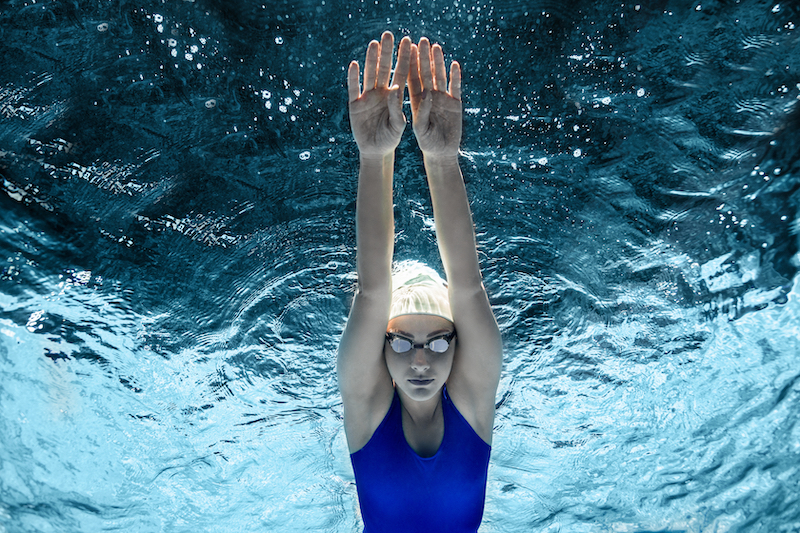Year-round swimmers can reduce their risk for shoulder pain
by taking time off and seeing a physical therapist
For the hardcore swimmers out there, training is a year-round affair. Over one million Americans are involved in recreational or competitive swimming, and more than one-third of these individuals practice and compete throughout the entire year. Competitive swimming is certainly a great way to stay fit all year, but it also carries with it a risk for shoulder pain that can be managed with certain precautions and staying conditioned.
Swimming is a great form of physical activity that strengthens multiple regions of the body and improves flexibility and endurance. The lack of impact helps swimmers avoid lower-body injuries, but its intense involvement of upper-body muscles increases the chances for overuse injuries.
Overuse injuries occur gradually over time and primarily result from fatigue and failure to adhere to proper stroke techniques. About 90% of swimmers’ complaints relate to their shoulders, and the most common injury overall is swimmer’s shoulder, which is a general term to describe any type of shoulder pain. Swimmer’s shoulder is usually due to tendinitis of the rotator cuff—a group of muscles and tendons that surround and stabilize the shoulder—and if left untreated, it can cause more pain and other injuries.
Other swimming-related injuries include foot and ankle issues, hip pain, breaststroker’s knee (knee pain related to ligament or tendon damage), and back pain. As with shoulder injuries, most of these problems occur when swimmers push their bodies too hard without enough time to recover. The best way to reduce the risk for shoulder pain and other swimming-related injuries is to ensure that you’re practicing and competing with the proper technique. While it’s best to consult with a swim trainer, here are some general tips to keep in mind:
- Warm up and stretch thoroughly before entering the water
- Avoid overuse injuries by mixing up strokes and spending less time practicing those that are causing pain; also be to take enough time to rest and recover
- Practice good communication between coaches, swimmers and sports trainers
- Perform core strengthening and cross-training exercises
Physical Therapists can Help Prevent and Treat Swimming Injuries
Another effective way to both prevent and treat swimming-related injuries is physical therapy. Physical therapists can create sport-specific training programs that will keep swimmers properly conditioned throughout the year and reduce their risk for enduring an injury to the shoulder or elsewhere in the body. If any injury does occur, they can also provide patients with an individualized treatment program that addresses their symptoms and focuses on the mechanics and muscles involved in swimming. The benefits of physical therapy for swimming injuries are highlighted in a published study in 2017, which evaluated whether surgery or non-surgical (conservative treatment) was better for tears of the rotator cuff. The conclusion states the following:
There is limited evidence that surgery is not more effective in treating rotator cuff tear than conservative treatment alone. Thus, a conservative approach is advocated as the initial treatment modality.
This shows that swimmers and any other patients with suspected rotator cuff injuries should see a physical therapist first before considering surgery. Doing so can help them reduce their pain levels and regain shoulder function with significantly lower costs and less risk for complications compared to surgical interventions.

